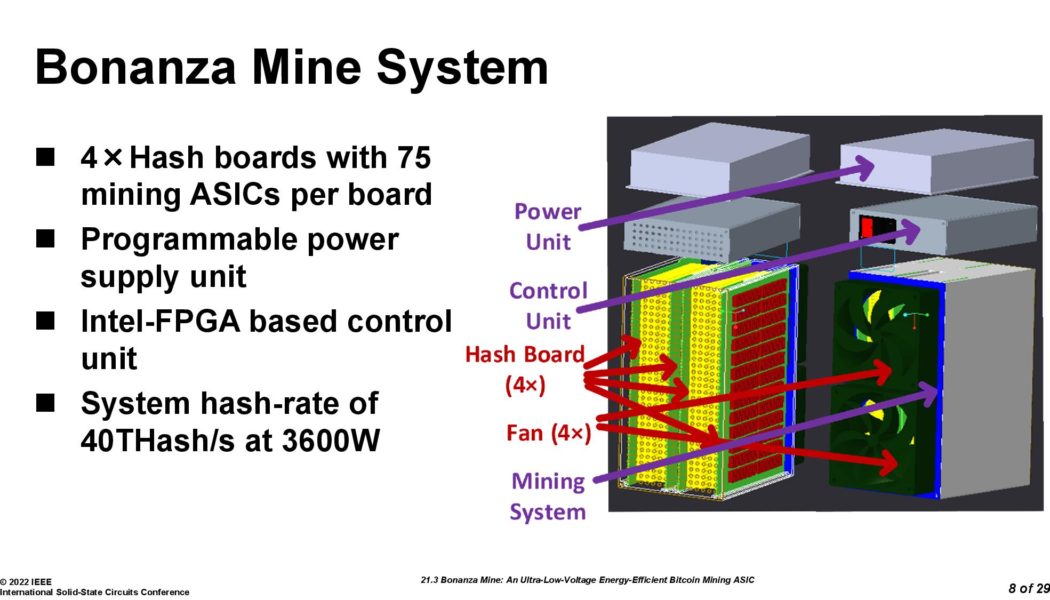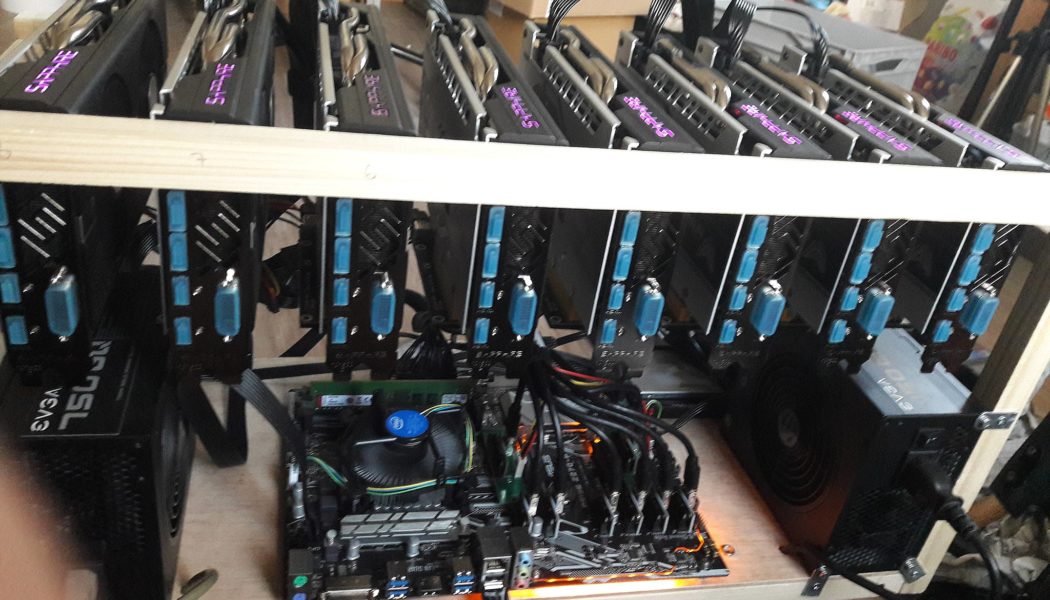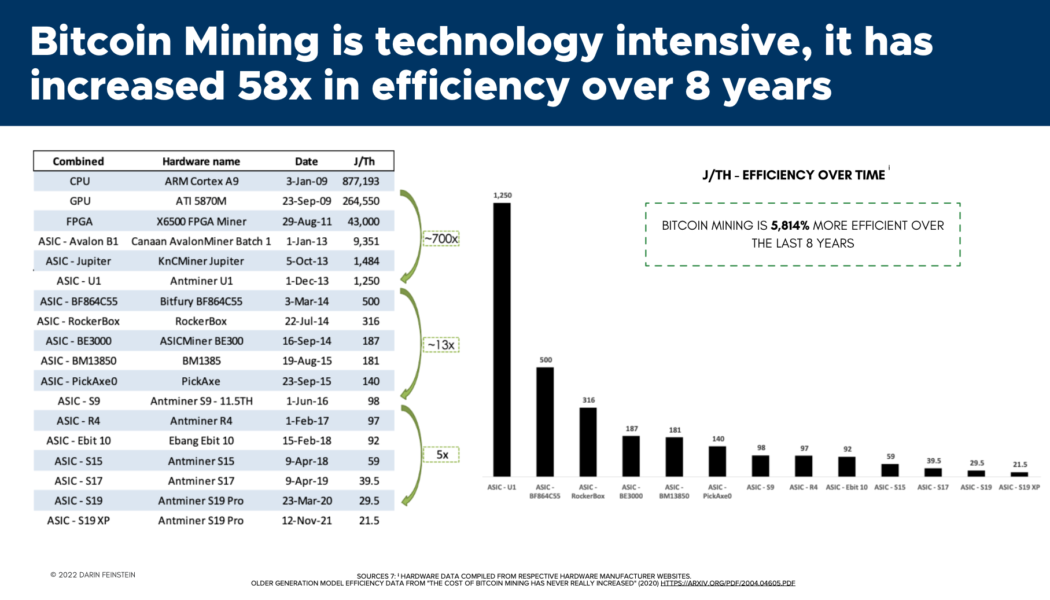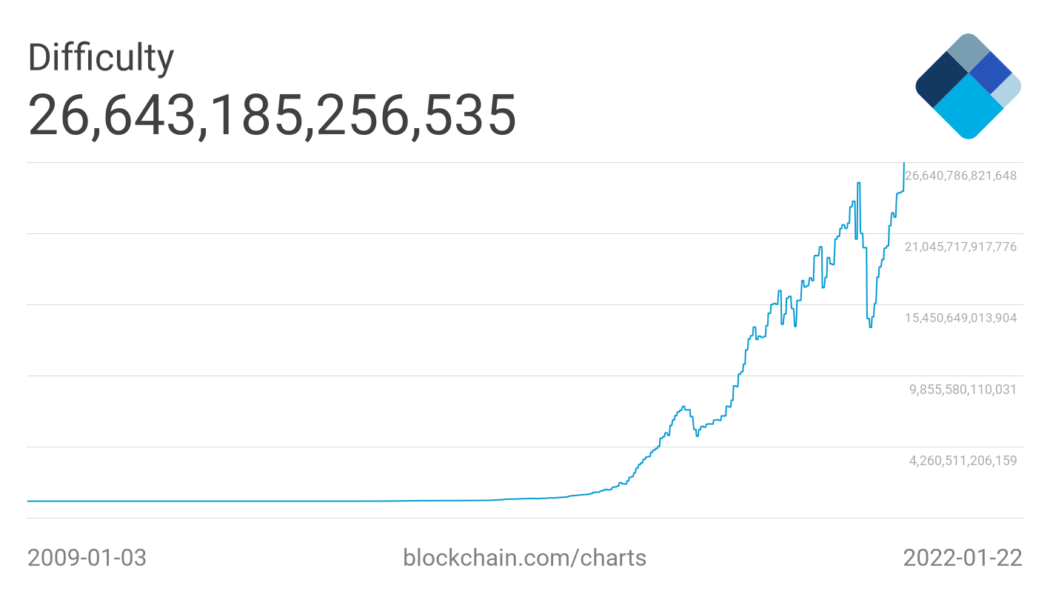Bitcoin Mining
Intel unveils 2nd-gen Bonanza Mine chip for efficient Bitcoin mining
Computer chip manufacturing giant Intel Corporation shared details of a new mining chip that will be coupled with a high-performance 3,600 Watt miner with the ultimate goal of improving Bitcoin (BTC) mining efficiency. Intel revealed its second-generation BTC mining setup during the IEEE International Solid-State Circuits Conference (ISSCC) 2022, a conference dedicated to the electronics and chip manufacturing industry. According to the company, Bonanza mine (BMZ2) is an ultra-low-voltage energy-efficient Bitcoin mining ASIC that can deliver 40 Terahashes per second (40 TH/s) performance. Intel’s Bonanza setup. Source: 2022 IEEE As Cointelegraph previously reported, Intel’s patent related to “high-performance Bitcoin Mining” dates back to November 2018, which had proposed ...
Georgia lawmakers consider giving crypto miners tax exemptions in new bill
Five members of the Georgia House of Representatives have introduced a bill that would exempt local crypto miners from paying sales and use tax. On Monday, Georgia Representatives Don Parsons, Todd Jones, Katie Dempsey, Heath Clark, and Kasey Carpenter introduced HB 1342, a bill which has yet to be titled. The legislation proposes to amend the state tax code “to exempt the sale or use of electricity used in the commercial mining of digital assets” and would likely only apply to commercial miners operating in a facility of at least 75,000 square feet — roughly 6,968 square meters. The proposed bill is the latest in the series of state-level measures aiming to encourage crypto miners to set up shop. In January, Illinois lawmakers introduced a bill which would extend tax incentives for data c...
Russian Ministry wants to legalize Bitcoin mining in specific areas
While the Russian government continues to work out a regulatory regime for digital assets, a federal ministry has made another proposal regarding the crypto mining industry. Russia’s Ministry of Economic Development has greenlighted the concept of crypto mining regulation in the country, proposing to allow mining operations in areas with “sustainable surplus in electricity generation,” local news agency Izvestia reported Tuesday. As part of the proposal, the ministry suggested introducing lower fees for setting up mining farms and data centers in specific Russian regions as well as offering reduced energy rates for such facilities. The ministry also wants to establish a power use limit for mining by individuals, reportedly proposing to introduce higher energy rates for increased energy spe...
Are we misguided about Bitcoin mining’s environmental impacts? Slush Pool’s CMO Kristian Csepcsar explains
It’s a controversial topic in the blockchain community that comes up from time to time — just how much impact Bitcoin (BTC) mining has on the environment. Last year, Tesla’s CEO Elon Musk brought forth a sharp correction in the cryptocurrency market by tweeting that Tesla would abandon plans to accept BTC, citing “rapidly increasing use of fossil fuels for Bitcoin mining and transactions.” However, a recent report published by CoinShares notes that despite the widespread use of coal, oil and gas for Bitcoin mining, the network accounts for less than 0.08% of the world’s CO2 production. During an exclusive interview with Cointelegraph, Kristian Csepcsar, chief marketing officer at Slush Pool, the oldest Bitcoin mining pool, gave insight on what he believes are ...
Bitcoin network hash rate explodes to a new all-time high of 248.11 EH/s
The Bitcoin (BTC) network has recorded a new hash rate all-time high of 248.11M TH/s as of Feb. 12, 2022, further securing the decentralized ecosystem through a growing network of global BTC miners. The hash rate correlates to the computing power required by a miner’s computer equipment to confirm a transaction. The recent spike in BTC’s network hash rate ensures further security against attacks by deterring bad actors from confirming fraudulent transactions. Bitcoin hash rate over the past year. Source: YCharts As evidenced by the above screenshot, the network hash rate jumped 31.69% — from 188.40 EH/s to 248.11 EH/s — in just one day. Moreover, the Bitcoin network’s hash rate levels rose 54.33% over the past year. Bitcoin hash rate over the past one month. Source: YCharts Pre...
The world’s first and oldest Bitcoin mining pool has mined nearly 1.3 million BTC since inception
All things have their humble beginnings; in 2010, the first Bitcoin (BTC) mining project was created in Prague, Czechia, and was simply called Bitcoin.cz. Soon afterward, founder Mark “Slush” Palatinus decided to move on to other ventures, such as creating the world’s first cryptocurrency hard wallet, Trezor. As a result, Braiins, a company doing embedded Linux development and research, took over the mining pool and renamed it accordingly. Fast forward to now, Braiins (Slush Pool) has grown to become one of the biggest Bitcoin mining pools. There are now over 15,000 users in the space, with its total hash rate accounting for 5% to 8% of that of the overall Bitcoin network. The company derives 100% of its income via BTC and charges a 2% to 2.5% commission from its mining f...
Simple math says Russia could collect up to $13B in crypto tax each year
The Russian government is expected to collect up to 1 trillion rubles ($13 billion) in crypto tax each year, as per an estimation by the authorities. The Bell, a local Russian publication, reportedly got its hands on the government analytic note that estimated the yearly tax revenue. According to the letter’s authors, Russians hold 12% or nearly $214 billion in crypto. The number of users on foreign exchanges is estimated to be about 10 million, added with the significant number of over-the-counter (OTC) crypto trades. The government agency believes even the most straightforward tax imposition can generate anywhere from 146 billion rubles to 1 trillion in crypto tax revenue. The note suggests two possible taxation methods: One for the crypto platforms such as exchanges, int...
Russia houses $200B worth of crypto, Kremlin estimates
Russian citizens reportedly own 16.5 trillion rubles ($214 billion) worth of cryptocurrencies, according to government estimates. A Bloomberg report noted that Russians own about 12% of the total global crypto holdings. The crypto holdings estimates were calculated by analyzing IP addresses of some of the most significant crypto exchange users in the country along with a few other data points, said two people working with Kremlin. The crypto holdings analysis of Russian citizens is being carried out to get an overview of the crypto market and formulate new regulations. The proposals are yet to be finalized. The estimates are believed to be on the lower side, given crypto regulations are not yet clear in the country and many users prefer to use anonymous tools to carry out their transa...
Bitcoin miners believe global hash rate to grow ‘aggressively’
Bitcoin (BTC) seems to be on everyone’s mind lately as the world recently witnessed the price of BTC take a rather unexpected bearish turn this month. On January 21, 2022, Bitcoin reached six-month lows, sinking below $40,000 for the first time in months. While some panicked, other industry experts pointed out that the Bitcoin network has become verifiably stronger than ever before. The growth of the Bitcoin network has become apparent, as hash rate figures for BTC continue to set new highs this month. For example, on Jan. 22, the BTC network recorded an all-time high of 26.643 trillion with an average hash rate of 190.71 exahash per second (EH/s). The hash rate will continue to grow, which is a good thing Samir Tabar, chief strategy officer at Bit Digital — a publicly listed Bitcoin...
Fossils vs. Renewables, PoW vs. PoS: Key policy issues around crypto mining in the U.S.
On Jan. 27, a group of eight U.S. lawmakers, led by Senator Elizabeth Warren, sent letters to the world’s six largest Bitcoin mining companies, demanding to reveal the detailed data on their electricity consumption. This isn’t the first time Senator Warren requested this information from a mining operation — last month a similar letter was sent to Greenidge Generation, which uses a natural gas plant to power its facility. These moves highlight the increasing regulatory pressure on crypto mining businesses in the United States. But, as last week’s Congress hearing showed, the growing scrutiny might turn out to be an opportunity to align the mining sector’s development with the broader political push for clean energy. Here are some of the key themes around crypto mining that have captured th...
Valkyrie aims for ETF linked to Bitcoin mining firms on Nasdaq
Crypto asset manager Valkyrie has filed an application with the United States Securities and Exchange Commission to trade an exchange-traded fund (ETF) with exposure to Bitcoin mining firms on the Nasdaq Stock Market. In a Wednesday SEC filing, Valkyrie said its Bitcoin Miners ETF will not invest directly in Bitcoin (BTC) but at least 80% of its net assets would offer exposure to the crypto asset through the securities of companies that “derive at least 50% of their revenue or profits” from BTC mining or providing hardware or software related to mining. The filing added Valkyrie would invest up to 20% of the ETF’s net assets in companies holding “a significant portion of their net assets” in Bitcoin. Valkyrie launched a Bitcoin Strategy ETF in October 2021, which offered indirect exposure ...
Bitcoin records all-time high network difficulty amid price fluctuations
The Bitcoin (BTC) network has recorded a new all-time high mining difficulty of 26.643 trillion with an average hash rate of 190.71 exahash per second (EH/s) — signaling strong community support despite an ongoing bear market. The Bitcoin network difficulty is determined by the overall computational power, which co-relates to the difficulty in confirming transactions and mining BTC. As evidenced by the blockchain.com data, the network difficulty saw a downfall between May and July 2021 due to various reasons including a blanket ban on crypto mining from China. BTC network difficulty. Source: Blockchain.com. As the displaced miners resumed operations from other countries, however, the network difficulty saw a drastic recovery since August 2021. As a result, on Saturday, the BTC network reco...























